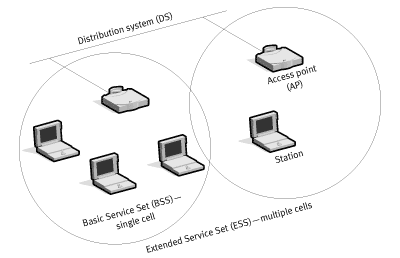LTE筆記: 6G Sustainable Networks -ITU-R Eenergy Efficiency
在前述的文章中, 我們介紹了能源節省的各種面向,
然而, 針對一個工程問題, 我們首先要定義的是如何評量節能效率,
換句話說, 我們要定義在甚麼情境下進行節能效率的評估,
我們以兩份 ITU 文件作為參考: ITU-R M.2410-0, ITU-R M.2412-0
在第一份文件 (ITU-R M.2410-0), 名稱為:
"Minimum requirements related to technical performance for IMT-2020 radio interface(s)",
定義了 IMT-2020 (5G NR) 中, 對於無線技術 (Radio Interface Technology, RIT) 所需要作出的評估,
其中, 關於能源效率的部分定義於 4.9 Energy efficiency, 以下是原文:
Network energy efficiency is the capability of a RIT/SRIT to minimize the radio access network energy consumption in relation to the traffic capacity provided. Device energy efficiency is the capability of the RIT/SRIT to minimize the power consumed by the device modem in relation to the traffic characteristics.
Energy efficiency of the network and the device can relate to the support for the following two aspects:
a) Efficient data transmission in a loaded case;
b) Low energy consumption when there is no data.
Efficient data transmission in a loaded case is demonstrated by the average spectral efficiency (see § 4.5).
Low energy consumption when there is no data can be estimated by the sleep ratio. The sleep ratio is the fraction of unoccupied time resources (for the network) or sleeping time (for the device) in a period of time corresponding to the cycle of the control signaling (for the network) or the cycle of discontinuous reception (for the device) when no user data transfer takes place. Furthermore, the sleep duration, i.e. the continuous period of time with no transmission (for network and device) and reception (for the device), should be sufficiently long.
This requirement is defined for the purpose of evaluation in the eMBB usage scenario.
The RIT/SRIT shall have the capability to support a high sleep ratio and long sleep duration. Proponents are encouraged to describe other mechanisms of the RIT/SRIT that improve the support of energy efficient operation for both network and device.
從以上文字中, 我們可以看到節能主要針對 eMBB 的應用場景,
同時, 針對能源使用考慮了兩個面向:
a) 能源轉換成傳送資料的效率 (通常我們稱為 Eenergy Efficiency)
b) 在沒有資料時, 網路節能的效果 (通常我們稱為 Eenergy Saving)
其中, 網路節能又可以進一步分成兩個情境: high sleep ratio and long sleep duration.
high sleep ratio 主要對應於傳輸時的 loading,
在網路附載低 (使用者較少, 或是通訊需求較低) 時, 透過資源配置來節省能源使用,
long sleep duration 則對應於沒有資料的傳輸時間區間, 例如日夜的人流變化,
假如有足夠長的時間沒有資料, 則可以更有效率的節省能源.
在第二份文件 (ITU-R M.2412-0), 名稱為:
"Guidelines for evaluation of radio interface technologies for IMT-2020",
定義了 IMT-2020 (5G NR) 中, 對於無線技術所進行社模擬情境設置,
其中, 關於能源效率的部分定義於 7.3.2 Energy efficiency, 以下是原文:
The energy efficiency for both network and device is verified by inspection by demonstrating that the candidate RITs/SRITs can support high sleep ratio and
long sleep duration as defined in Report ITU-R M.2410-0 when there is no data.
Inspection can also be used to describe other mechanisms of the candidate RITs/SRITs that improve energy efficient operation for both network and device.
在此文件中, 並沒有詳細定義 energy efficiency 模擬的情境,
不過, 針對 eMBB/mMTC/URLLC 的模擬倒是有所定義:
並有詳細的模擬需求, 我們以 urban-eMBB 為例, 裡面就是以蜂巢式網路為模擬情境:
在此標準的模擬情境下, 我們便可以模擬網路中的使用者與通訊需求,
並透過不同的使用者密度, 以及需求的通訊流量, 驗證 NES 的效能.
在此兩份文件中, 提供了 ITU-R 針對 5G NR 網路技術節能的想法,
不過, 考慮到節能的確是一個較新的研究議題,
在這兩份文件中, 並未詳細定義模擬的情境與 loading 參數等,
這一部分文件的完善, 可能會到 3GPP 針對 NES 進行的 TR (Technical Report) 討論,
我們接著也會繼續找尋相關文件, 確認整體的 NES 效能評估方式.





留言
張貼留言